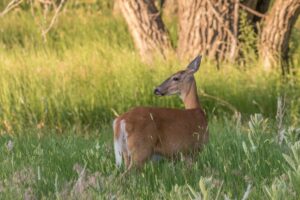Pierce County has joined a legion of others with its first CWD wild deer detection.
The Wisconsin Department of Natural Resources (DNR) confirmed test results came from a deer within 10 miles of the Dunn and St. Croix county borders. The animal was humanely dispatched in the town of Spring Lake. The deer was a 4-5-year-old doe.
What Happens Now
This detection will cause the following:
- Pierce County will begin a three-year baiting and feeding ban on May 15, 2024.
- St. Croix County will begin a two-year baiting and feeding ban on May 15, 2024.
- Dunn County will renew the ban already in place.
The DNR and the Pierce County Deer Advisory Council plan to host a public meeting. More details will be provided on the DNR’s Hearings and Meetings Calendar. At the meeting, DNR staff will provide information about CWD in Wisconsin and local testing efforts within Pierce County.
State law requires that the DNR enact a three-year baiting and feeding ban in counties where CWD has been detected, as well as a two-year ban in adjoining counties within 10 miles of a CWD detection. If additional CWD cases are found during the lifetime of a baiting and feeding ban, the ban will renew for an additional two or three years.
People are being reminded that baiting or feeding deer encourages congregating. This normally wouldn’t happen and brings animals together where infected deer can spread CWD through direct contact. Sick deer can also leave behind infectious prions in their saliva, blood, feces and urine. More information regarding baiting and feeding regulations is available on the DNR’s Baiting and Feeding webpage.
CWD is a fatal. It can infect deer, moose, elk and reindeer/caribou. It belongs to the family of diseases known as transmissible spongiform encephalopathies (TSEs) or prion diseases. The DNR began monitoring the state’s wild white-tailed deer population for CWD in 1999. The first positives were found in 2002.
